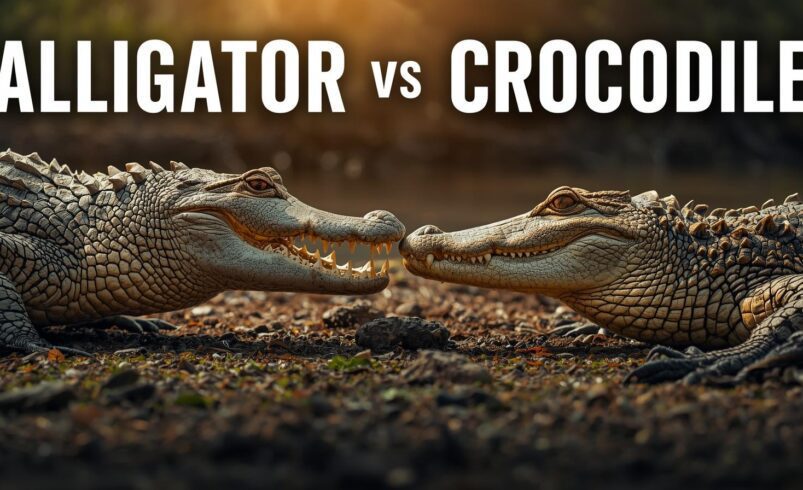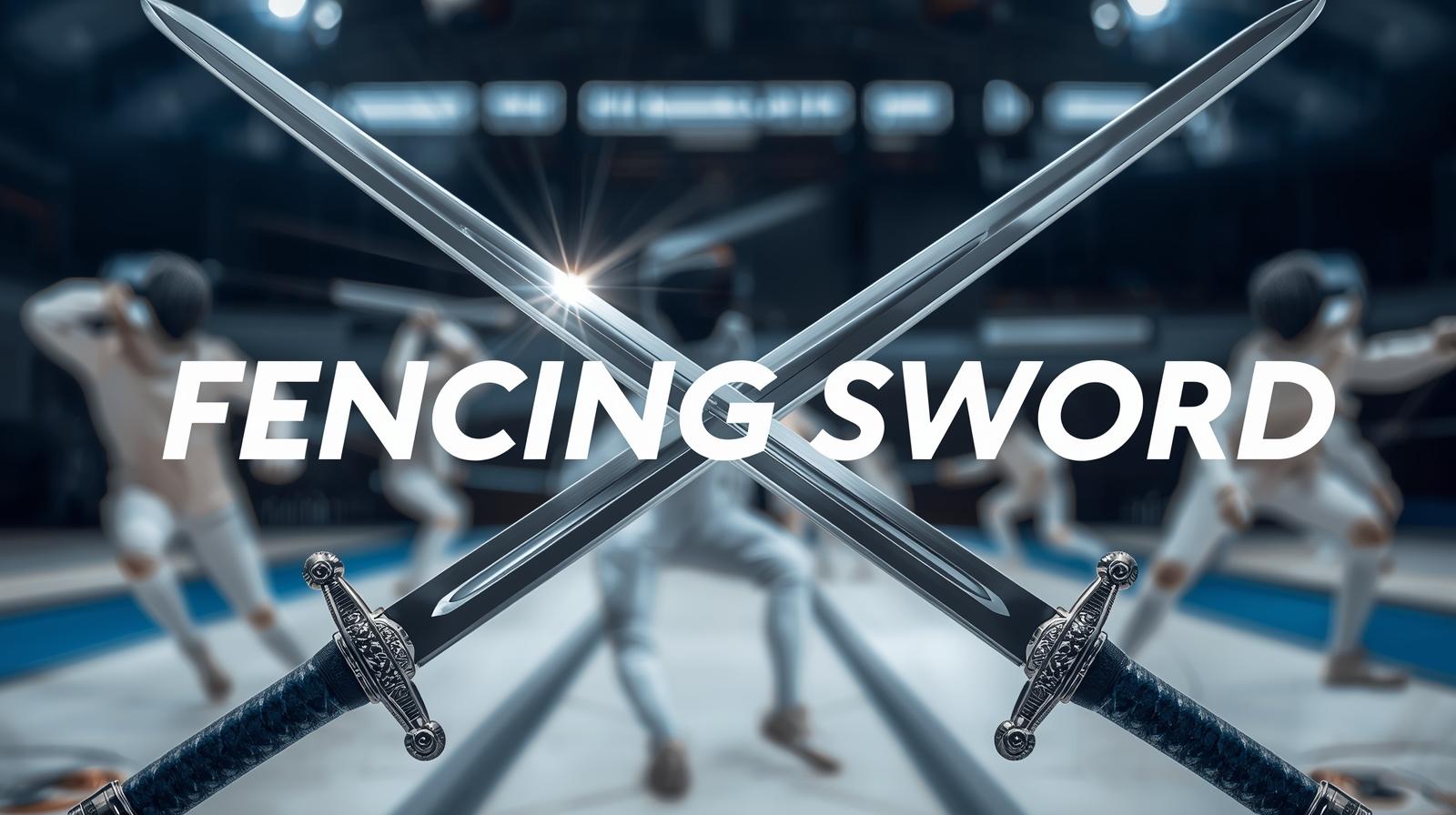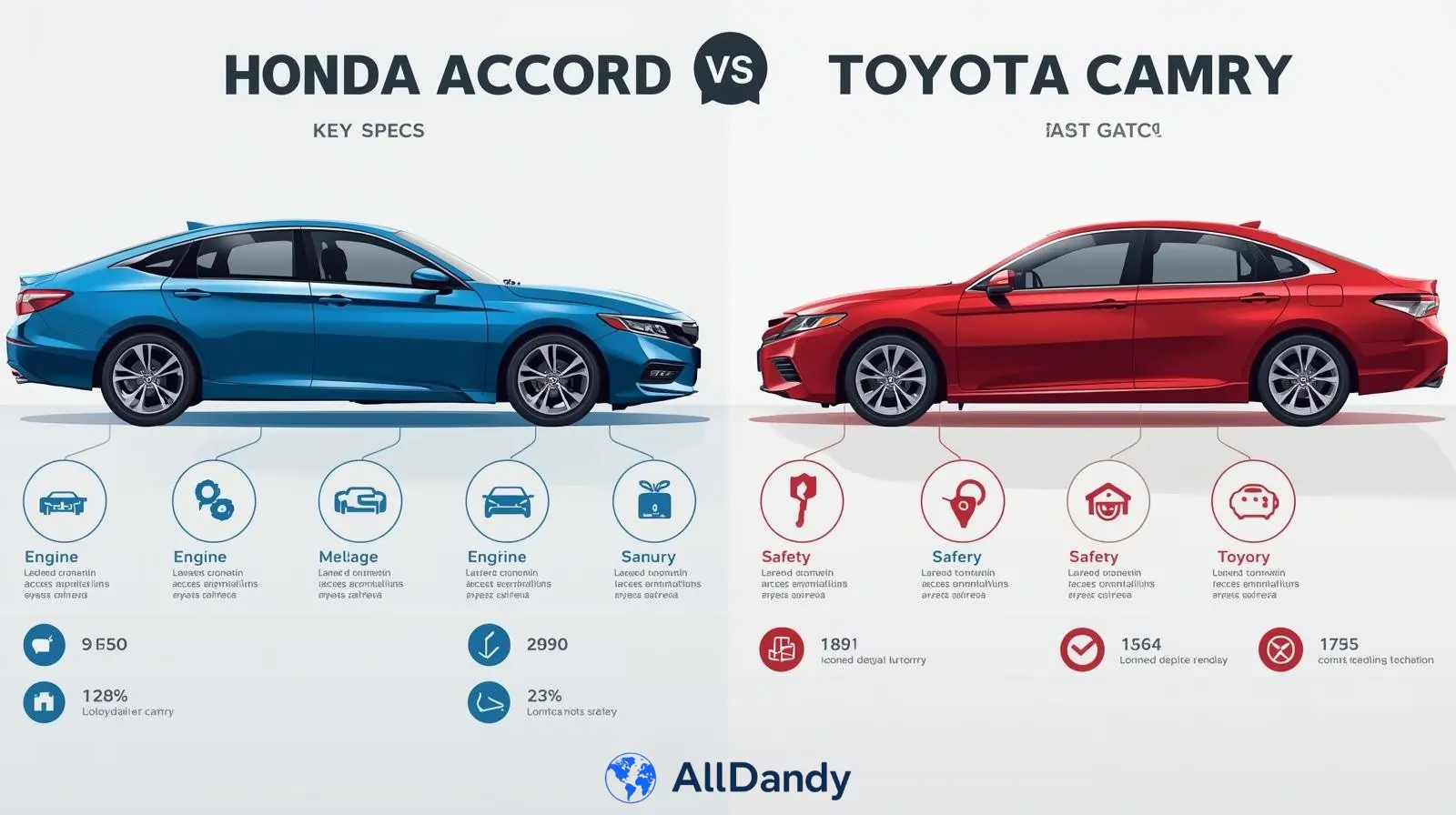Standing at the edge of a murky swamp during my first Everglades tour, I spotted what I thought was a log floating near the shore. Then it blinked. My guide whispered, “Alligator or crocodile can you tell?” That moment sparked my fascination with these ancient predators, and honestly, most people get them mixed up. The alligator vs crocodile debate isn’t just about semantics it’s about understanding two of nature’s most powerful reptiles that have survived since the dinosaur era.
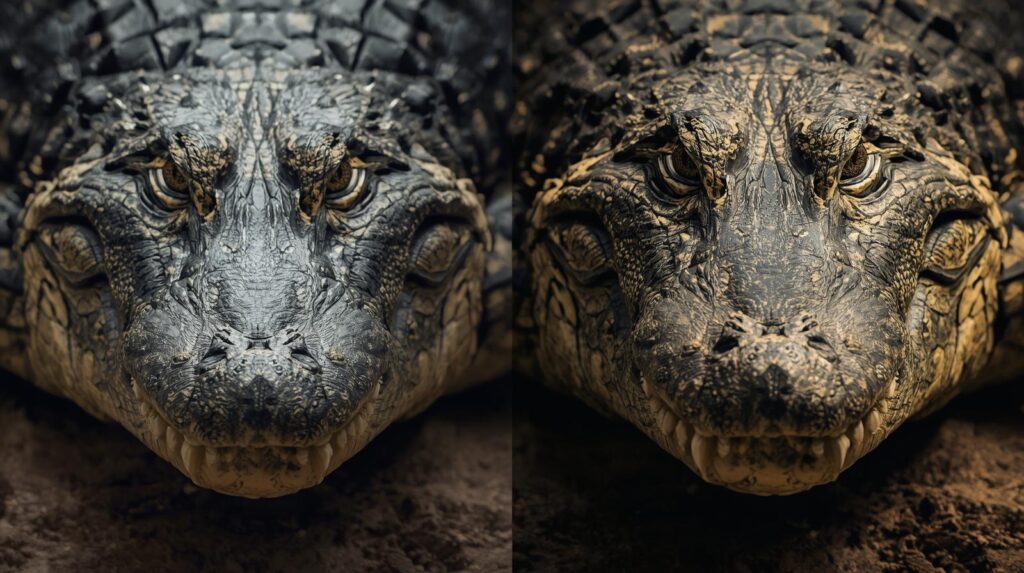
Understanding the Alligator vs Crocodile Mystery
The confusion between alligators and crocodiles runs deeper than most people realize. Both belong to the order Crocodylia, sharing evolutionary roots that trace back millions of years. Yet despite their common ancestry, these apex predators have evolved distinct characteristics that set them apart in remarkable ways.
When examining the alligator vs crocodile question, we’re looking at two separate families: Alligatoridae (alligators and caimans) and Crocodylidae (true crocodiles). This taxonomic distinction explains why an alligator and crocodile can coexist in the same region like South Florida yet occupy different ecological niches.
The global distribution tells an interesting story. While alligator or crocodile species exist on nearly every continent, their ranges rarely overlap. Alligators primarily inhabit the southeastern United States and China, with Louisiana and Florida hosting over a million American alligators each. Crocodiles, conversely, dominate tropical regions across Africa, Asia, Australia, and the Americas.
Physical Differences: Alligator vs Crocodile Showdown
Snout Shape: The Most Obvious Tell
The easiest way to distinguish an alligator vs crocodile is examining the snout. Alligators possess wide, U-shaped snouts designed for crushing prey with maximum force. Crocodiles sport longer, V-shaped snouts built for catching fish and delivering precision strikes.
This isn’t just aesthetic it’s functional evolution. The alligator’s broader jaw generates approximately 2,125 PSI of bite force, while crocodiles can unleash a devastating 4,000 to 5,000 PSI, making them one of the strongest biters in the animal kingdom.
Size and Weight Comparison
| Feature | Alligator | Crocodile |
| Average Length | 10-14 feet (3-4.2 meters) | 14-20 feet (4.2-6 meters) |
| Maximum Length | 15 feet (4.5 meters) | 23 feet (7 meters) |
| Weight Range | 500-1,000 lbs (225-450 kg) | 800-1,000 lbs (360-450 kg) |
| Bite Force | 2,125 PSI | 4,000-5,000 PSI |
An adult male American alligator and crocodile showcase dramatic size differences. While alligators rarely exceed 14 feet, saltwater crocodiles the largest living reptiles can grow beyond 20 feet. The current US crocodile population, estimated at 2,000 individuals, includes some formidable specimens.
Teeth Visibility and Jaw Structure
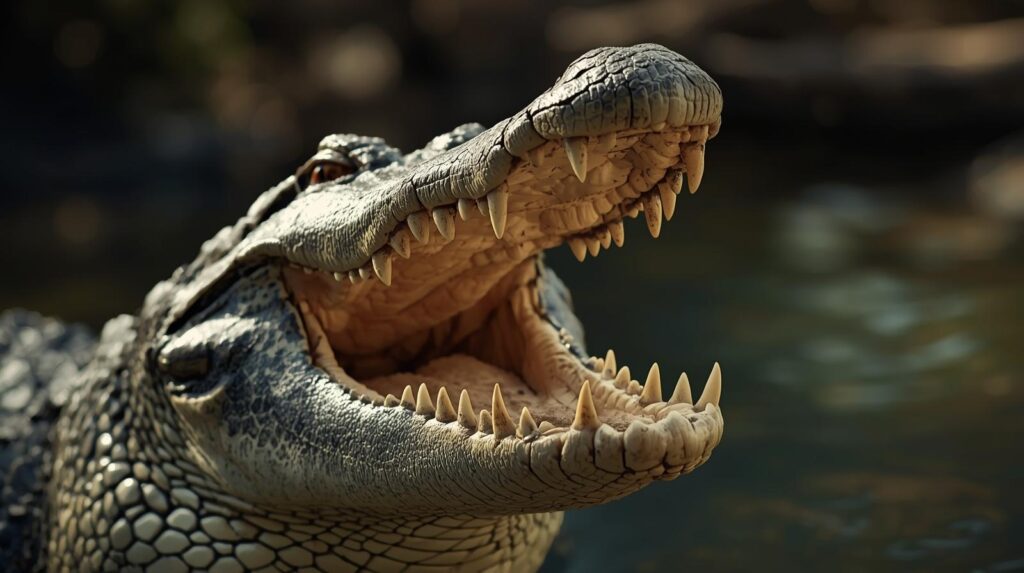
When an alligator closes its mouth, only upper teeth remain visible due to its pronounced overbite. The broader upper jaw completely covers the lower teeth. A crocodile, however, displays an interlocking tooth pattern with the massive fourth tooth on the lower jaw fitting into a notch on the upper jaw visible even when the mouth is shut.
This dental arrangement in the alligator vs crocodile comparison reveals their hunting strategies. Alligators crush and grip, while crocodiles pierce and hold.
Habitat Preferences: Where Alligator and Crocodile Thrive
Freshwater vs Saltwater Tolerance
Perhaps the most significant ecological difference in the alligator or crocodile discussion involves water salinity. Alligators predominantly inhabit freshwater environments swamps, marshes, rivers, and lakes. They lack functional salt glands, making saltwater inhospitable for extended periods.
Crocodiles possess specialized salt glands on their tongues, enabling them to thrive in both freshwater and saltwater habitats. This adaptation allows species like the saltwater crocodile and American crocodile to navigate coastal waters, estuaries, and even venture into open ocean.
Geographic Distribution and Population
Southern Florida represents the only place on Earth where alligator and crocodile populations coexist naturally. This unique overlap occurs because American crocodiles tolerate brackish coastal waters while alligators dominate inland freshwater systems.
Louisiana hosts the largest alligator population in North America, with estimates exceeding one million individuals. Florida follows closely with similar numbers. Meanwhile, Australia’s saltwater crocodile population ranges between 100,000 to 200,000 adults, demonstrating successful conservation efforts.
The American crocodile’s US population has rebounded to approximately 2,000 individuals a conservation success story considering they were nearly extinct in the 1970s. This growth signals their return to the northernmost portion of their historical range.
Behavioral Patterns: Alligator vs Crocodile Temperament
Aggression Levels and Human Interactions
From personal observation and expert accounts, crocodiles exhibit significantly more aggressive territorial behavior than alligators. While both species deserve respect, the alligator vs crocodile temperament comparison consistently shows crocodiles as the more dangerous predator.
Alligators tend toward reclusive behavior, avoiding human contact when possible. They’re opportunistic feeders but rarely view humans as prey. Crocodiles, particularly saltwater and Nile crocodiles, display active predatory behavior and have been involved in more fatal attacks globally.
The notorious “salties” of Australia and Southeast Asia demonstrate bold aggression, defending territories aggressively and occasionally attacking without apparent provocation. This behavioral difference makes understanding the alligator or crocodile distinction crucial for anyone living near or visiting their habitats.
Conservation Status: Protecting Alligator and Crocodile Species
Both alligators and crocodiles faced severe population declines through the mid-20th century due to hunting and habitat loss. The American alligator was listed as endangered in 1967 but has since recovered spectacularly a conservation triumph that led to its removal from the endangered species list.
The American crocodile remains listed as vulnerable, though its population is increasing. Thirteen of 23 crocodile species face some level of extinction threat, while both alligator species (American and Chinese) have shown population stability or growth.
Conservation programs focus on habitat protection, regulated hunting, and captive breeding. The recovery demonstrates that targeted conservation efforts work when properly funded and implemented.
Evolutionary History and Ancient Connections
The alligator vs crocodile lineage splits occurred approximately 80 million years ago during the Late Cretaceous period. These reptiles witnessed the rise and fall of dinosaurs, survived mass extinction events, and adapted to changing climates and landscapes.
Fossil records show crocodylomorphs early crocodilian ancestors existed over 200 million years ago. The body plan has proven so successful that modern alligator and crocodile species remain remarkably similar to their ancient relatives, earning them the title of “living fossils.”
This evolutionary success stems from adaptable physiology, efficient hunting strategies, and the ability to survive in diverse environments. Understanding their prehistoric origins helps explain why these apex predators continue thriving today.
Practical Identification Guide
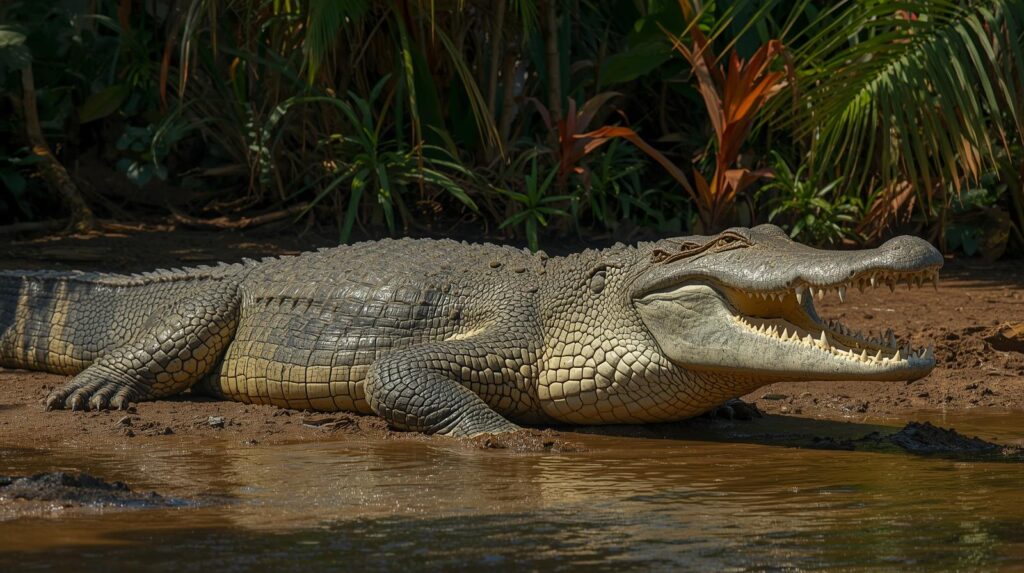
When encountering these reptiles in the wild, remember these quick identification tips for the alligator vs crocodile question:
Color: Alligators appear darker, almost black, especially when wet. Crocodiles display lighter, olive-brown, or gray-green coloration.
Snout: U-shaped means alligator; V-shaped indicates crocodile.
Teeth: Visible fourth tooth when mouth closed? That’s a crocodile.
Location: Freshwater inland? Probably an alligator. Coastal or brackish water? Could be either, but likely a crocodile.
Demeanor: Shy and reclusive suggests alligator; bold and territorial points toward crocodile.
These distinctions become second nature with experience, though maintaining safe distances remains paramount regardless of species identification. For comprehensive wildlife information, visit alldandy for expert guidance on various topics.
The Role of Apex Predators in Ecosystems
Both alligators and crocodiles serve as keystone species in their respective ecosystems. Alligators create “gator holes” during dry seasons depressions that retain water and provide critical habitat for fish, turtles, and birds. These engineering activities benefit entire wetland communities.
Crocodiles regulate fish populations and remove sick or weak animals, maintaining ecosystem health. Their presence indicates robust, functioning wetlands making them valuable environmental indicators.
The alligator vs crocodile ecological impact extends beyond direct predation. Their nesting sites provide nutrients for vegetation, and their movements create channels that alter water flow patterns, benefiting countless species.
Diet and Hunting Strategies Compared
The alligator and crocodile dietary preferences reflect their physical adaptations. Alligators primarily consume fish, turtles, birds, and small mammals. Their crushing bite force allows them to break through turtle shells and alligator snapping turtle jaws with ease.
Crocodiles exhibit more diverse diets, taking everything from fish to large mammals. Saltwater crocodiles have been documented attacking water buffalo, sharks, and occasionally humans. Their powerful bite and interlocking teeth enable them to grasp and subdue formidable prey.
Both species employ the “death roll” technique spinning rapidly while gripping prey to tear off manageable chunks. This behavior compensates for their inability to chew, as crocodilians lack the jaw structure for grinding food.
Reproduction and Nesting Behaviors
Female alligators build nests from vegetation mounds, which generate heat through decomposition. They remain near nests, protecting eggs from predators. Temperature during incubation determines sex warmer temperatures produce males, cooler temperatures yield females.
Crocodiles exhibit similar temperature-dependent sex determination but often dig nests in sandy beaches or riverbanks rather than vegetation mounds. Some species guard nests aggressively, while others provide minimal parental care beyond nest site selection.
Both alligator or crocodile mothers respond to hatchling calls, often helping young emerge from eggs and transporting them to water in their mouths. This parental investment, unusual among reptiles, contributes to higher survival rates.
Lifespan and Maturity Timelines
American alligators can live 30-50 years in the wild, with some individuals exceeding 70 years in captivity. They reach sexual maturity around 10-12 years when they’ve grown to approximately 6 feet in length.
Crocodiles generally live longer saltwater crocodiles can survive 70+ years, with some estimates suggesting centenarian individuals exist. Their delayed maturity (12-16 years) means population recovery takes considerable time following declines.
Understanding these life history traits helps conservation biologists develop effective management strategies. The long lifespan but slow reproductive rate makes these species vulnerable to overharvesting and habitat loss.
The Cultural Significance
Throughout history, alligators and crocodiles have occupied prominent positions in human culture and mythology. Ancient Egyptians revered the Nile crocodile as the god Sobek. Native American tribes incorporated alligators into creation stories and spiritual practices.
Modern culture portrays these reptiles as both fearsome predators and conservation symbols. The alligator vs crocodile fascination drives ecotourism, generating millions in revenue for regions like the Everglades, Northern Australia, and the Nile River basin.
This cultural connection helps support conservation funding while educating the public about these remarkable animals. Wildlife tourism, when conducted responsibly, benefits both local economies and reptile populations.
Conclusion: Respecting Nature’s Ancient Predators
The alligator vs crocodile debate reveals more than simple physical differences it exposes the incredible evolutionary adaptations that have allowed these reptiles to persist for millions of years. Whether you encounter the reclusive alligator in a Louisiana swamp or spot a massive saltwater crocodile in Australian waters, you’re witnessing living history.
Understanding these distinctions matters for safety, conservation, and appreciating biodiversity. As climate change and habitat loss threaten wildlife globally, protecting alligator and crocodile populations preserves critical ecosystem functions and maintains the delicate balance of wetland environments.
These prehistoric survivors deserve our respect, protection, and continued study. Their resilience offers hope that with proper conservation efforts, even species pushed to the brink can recover and thrive.
Frequently Asked Questions
Q1: Can alligators and crocodiles mate with each other?
No, alligators and crocodiles cannot interbreed. Despite belonging to the same order (Crocodylia), they’re from different families (Alligatoridae and Crocodylidae) and have incompatible genetics. Their evolutionary divergence occurred approximately 80 million years ago, making hybridization biologically impossible.
Q2: Which is more dangerous to humans alligator or crocodile?
Crocodiles pose significantly greater danger to humans. While both species can be dangerous, crocodiles particularly saltwater and Nile crocodiles display more aggressive behavior and have been responsible for far more fatal attacks. Alligators typically avoid human interaction, with attacks occurring primarily when they’re provoked, protecting nests, or conditioned to associate humans with food.
Q3: Why does Florida have both alligators and crocodiles?
Southern Florida is the only place on Earth where alligators and crocodiles naturally coexist because it offers both freshwater and brackish/saltwater habitats. American alligators dominate inland freshwater areas like the Everglades, while American crocodiles prefer coastal mangrove swamps and saltwater environments. This habitat separation allows both species to thrive without direct competition.
Q4: How can you tell an alligator from a crocodile by looking at its teeth?
When their mouths are closed, alligators show only upper teeth because their wider upper jaw covers the lower teeth completely. Crocodiles display both upper and lower teeth in an interlocking pattern, with the large fourth tooth on the lower jaw prominently visible in a notch on the upper jaw. This tooth visibility difference provides the quickest identification method.
Q5: Are alligators and crocodiles still endangered species?
American alligators have fully recovered from endangerment and are now listed as “least concern” with populations exceeding two million. American crocodiles remain listed as vulnerable though populations are increasing. Globally, 13 of 23 crocodile species face extinction threats, while the Chinese alligator is critically endangered. Conservation status varies significantly by species and region so which specific species concerns you most?

